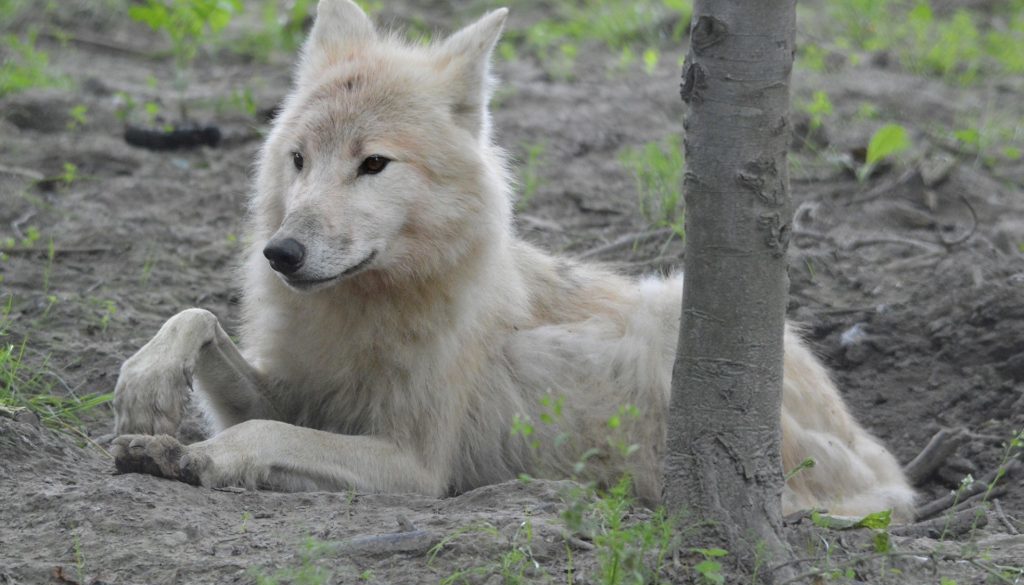Scientists Find Serious Flaws in Proposal to Delist Endangered Gray Wolf
By Jacob Carter, Union of Concerned Scientists
According to a five-member peer-review panel, the administration’s proposal to delist the endangered gray wolf (Canis lupus) from the Endangered Species Act (ESA) is chalk full of scientific errors that misrepresent the scientific consensus regarding wolf conservation and taxonomy. One member of the panel even said that the proposed rule seems as if it were written with a predetermined conclusion to delist the endangered gray wolf, and then the administration cherry picked evidence they thought supported their conclusion. “It looks like they decided to delist and then they compiled all the evidence that they thought supported that decision. It simply doesn’t support the decision,” said Adrian Treves, an environmental studies professor at the University of Wisconsin. Indeed, the 245-page report provided to the US Fish and Wildlife Service (FWS) by the peer-review panel says that the evidence doesn’t support the administration’s conclusion to rollback protections for the gray wolf across the lower-48.
The peer-review process at FWS
Peer-review is the bedrock of publishing scientific results. Scientists write up the results of their study in a paper that is then anonymously reviewed by peers in their field. The review ensures that the questions scientists are asking are addressed by the right methods and that results are interpreted correctly. If one, it only takes one, peer reviewer finds a major fault in your study, and the editor of the journal agrees that the fault is legitimate and should be addressed, then that fault must be addressed before the results can be published. This may mean further analysis of data, conducting more experiments, or if the scientist(s) cannot address the fault then a rejection of publication of results. According to the recent peer-review of the FWS’s proposal to delist the gray wolf from the ESA, the proposal contained several scientific errors. This means that the administration may address the errors elucidated in the peer-review and produce a proposal that is in-line with the best available science or retract the proposal altogether.
Science-based agencies in our government have peer-review processes in place, and these are especially important for implementing policies that are required by law to be informed by science. The ESA is one such policy that requires decisions to list or delist a species to/from endangered status to be based solely on the best available scientific and commercial data. In 2016, the FWS revised their peer-review policy after encouragement from the Union of Concerned Scientists, Project Coyote, and a letter signed by nearly a thousand conservation biology experts across the country. The new policy entrusts the scientific evaluation of species listing and de-listing determinations to an external committee of scientists who are best suited to assess the scientific evidence and make a public recommendation to the agency, based solely on the scientific and commercial data available, as the ESA requires. The new policy also took additional steps to make the process more transparent by making the peer-review documents available to the public, as well as the conflicts of interest forms from the peer-review panel. The updated policy strengthened the process and it was a step in the right direction for science by FWS.
The Gray Wolf’s Controversial History
The gray wolf has long been a controversial species regarding its endangered status. In 2011, ESA protections were removed for wolves in the Northern Rockies by Congress – the first time ever that the legislative body delisted an endangered species. The scientific community largely agreed that this rollback of protections was not based on the best available science.
Since the gray wolf’s protections under ESA were removed in the Northern Rockies, interest groups have moved to have the wolves’ protections removed across most of the lower-48. The FWS submitted a proposal for this delisting in 2013, but an independent peer-review as well as a majority of public comments against the proposed delisting delayed the agency’s decision. The Trump administration proposed to move the delisting of the wolf across the lower-48 in March, 2019. But the scientific consensus remains the same – the gray wolf still needs protections afforded to it by the ESA.
Science Says Protect the Wolves
Treves is concerned that if protections are lifted for the gray wolf then illegal poaching will increase and this could decimate the population like has happened in the past, a concern that Treves has published on previously. Rancher and hunters continue to express concern that protections for wolves will increase their population such that the carnivore will annihilate stocks of prey (e.g., elk, sheep, cows). But there is no scientific evidence that supports killing predators makes livestock safer. In fact, in some cases it seems that killing predators may actually worsen the problem.
The peer-review is in and the experts say that the Trump administration’s proposal to delist the endangered gray wolf is not in line with the scientific evidence. This means that the administration should throw the delisting proposal in the trash because the ESA requires delisting decisions to be based solely on the best available scientific and commercial data. If they move ahead with the proposal as-is…well…seems like that would be illegal.

